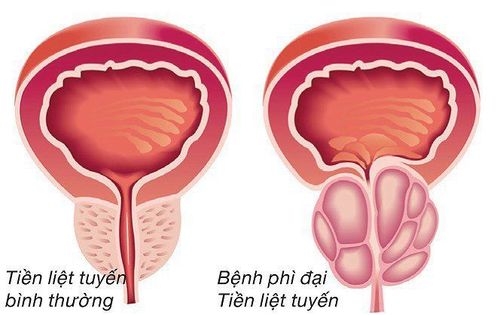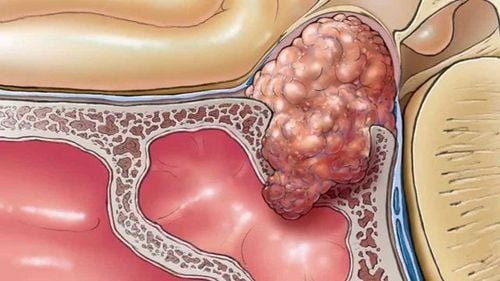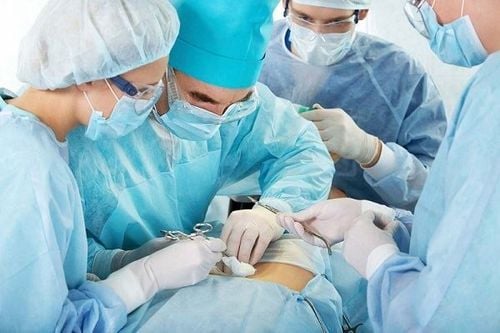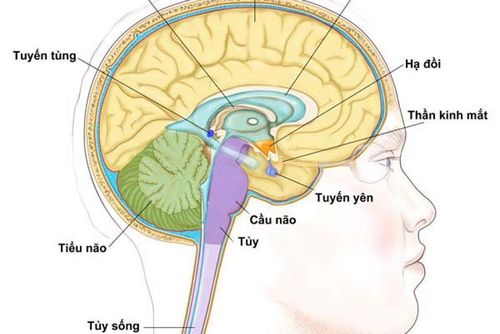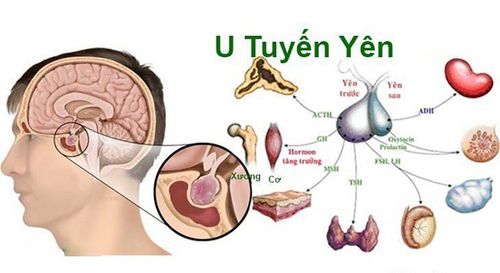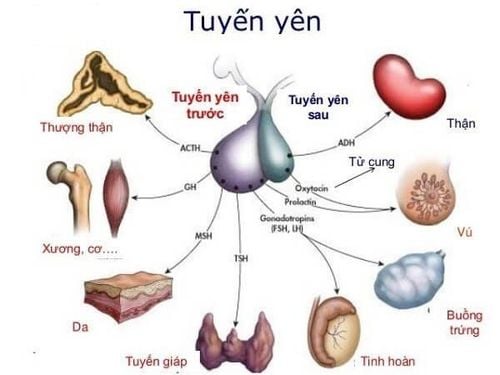This is an automatically translated article.
Peripheral blood collection or venipuncture are methods used in intravenous infusion techniques. With the principle of using a flexible plastic tube inserted into the vein, thereby leading the needle in and fixing the placement of the intravenous needle, it has brought many benefits for infusion in patients.
1. The meaning of placing an intravenous catheter
Intravenous injection or infusion is a method of delivering drugs or liquids into the body. Through the bloodstream, the drug will be absorbed more quickly with oral administration. This is considered a fast-acting and highly effective treatment method for patients.
In this technique, the doctor will use an instrument called a peripheral needle. A flexible plastic tube is inserted into the vein and the needle is threaded through. This action ensures that the drug is delivered to the correct location. At the same time, the inserted plastic tube has the task of fixing to avoid the needle causing damage to the blood vessel.
>>> Possible complications when infusion
Usually, the doctor will inject directly to avoid cumbersome steps. However, for patients who need multiple infusions and are in poor health, a peripheral needle is always the optimal choice. This technique will limit the number of times of venipuncture, and at the same time ensure that when the patient's health is weakened, the catheter will still maintain its function.
In particular, intravenous needles have outstanding advantages over traditional needles. Unintentional accidents such as vascular damage are minimized. Along with that, the convenience of the peripheral needle will help the nurse quickly administer the infusion to the patient.
>>> What effect does infusion (protein) have on the body?
2. Structure and strengths when choosing venous catheters
The material for making the needle is ETFE. They are thin-walled, not too stiff but enough to pass through a vein. In addition, the conduit is elastic and easily adapts to the body. The needle tip is also quite soft and can be adjusted to minimize damage when the patient moves. With the characteristic of being tested biological material, the peripheral needle can be placed in the patient's body for up to 72 hours. The needle is made to be sharp but does not cause pain to the patient like a traditional needle. After infusion, the needle mark is not as large as a traditional needle. Moreover, bruises caused by injury to the veins also do not appear or spread. Due to the limited number of needle punctures, the problem of infection is also minimized. The needle has a tapered tip, which reduces the resistance to penetration. These needles are sterilized and guaranteed to be sterile, without any residue. Therefore, using peripheral needles will reduce the impact on the environment by not using bactericidal chemicals. When using the peripheral blood collection method, the needle path is stable because it is placed in the vein and the elasticity has fixed the needle in the best position. Each time the patient uses it, there will be no restriction of movement. This is a great advantage especially for the elderly and small children. If the case requires a long infusion and over many days, the patient will not have to be immobile or suffer from numbness due to holding one position. >>> Using intravenous fluids in resuscitation
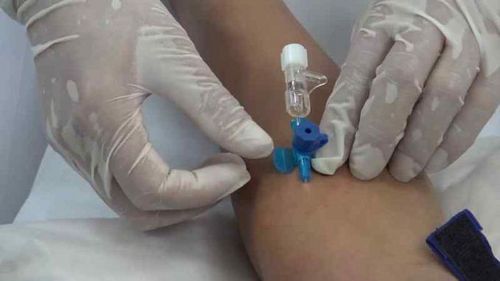
Đặt kim luồn tĩnh mạch có những ưu điểm vượt trội hơn các loại kim truyền thống
3. Distinguish the types of intravenous needles
Venipuncture needles are mass produced. However, depending on the case, the needle size is adjusted. Typically, the needle tip will range between 1.4 and 2.4 mm. The needle size classification will be convenient for management and use.
To recognize the classification you can based on the color of the needle. Because in the medical profession there are many urgent cases, so distinguishing by color is the fastest way. At the same time, it is also a way to minimize the risk. Needle size 24 yellow, size 22 blue, size 20 pink, size 18 green, size 16 gray, size 14 crab color.
This classification will be convenient for storage and use coordination. From there, you can manage both quantity and demand.
>>> What is the cause of the hard lump after the infusion?
The function of the needle is also widely used in medicine such as infusion, vein removal, arterial puncture, venipuncture.....
4. Instructions on how to properly use the needle and take care to ensure safety
Before administering injections or inserting needles, the doctor will disinfect hands and medical equipment. Especially in surgery, tools such as shirts, hats, masks, gloves are disinfected and guaranteed to be sterile when used. Then comes the preparation step. Preparing for venipuncture requires the following tools:
Plates containing essential tools: Cotton, medical alcohol, alcohol-soaked cotton, scissors, syringes, infusion lines, needles; Pillows for patient support arms, bandages, gauze straps, medical waste containers. Performing injections or drawing peripheral blood needs to follow all steps to ensure effectiveness. Here are 6 reference steps for placing an intravenous catheter with some notes from the doctor:
Find the exact location of the vein: When choosing a vein for injection or infusion, the nurse or nurse will give priority to the vein. bigger. At the same time, the position of the vein is not in a folded position or with a high need for movement. If the patient is paralyzed or undergoing dialysis, it is necessary to avoid extracting in that location. The sites where the needle has been injected or the skin wound appears should not be re-injected because it will easily cause infection. In some cases, performing venipuncture requires additional bronchoscope support. Conduct disinfection after finding the vein: To disinfect the patient, nursing nurses will have 2 ways to do it. One is to use alcohol to disinfect in a spiral from the inside to the outside so that the radius reaches 5cm from the defined position of the vein. It is also possible to disinfect from the bottom up, from the middle to the outside, as long as the furthest position is 5 cm away from the injection site. This will ensure that bacteria do not enter when injecting. At the same time, bacteria in the disinfection area are also prevented. Choose the right metal needle tip: There are many needles to choose from. So the nurse or nurse will choose the most suitable needle for the patient. Small needles will be used for small circuits. The advantage of this type of needle is that the sharpness is easy to penetrate and rarely appears out of the way. As a result, the patient also reduces swelling and pain. In other cases, a large needle may be used. However, it will be limited to not using cum on 22. Usually 14, 16, 18 are common needle sizes.
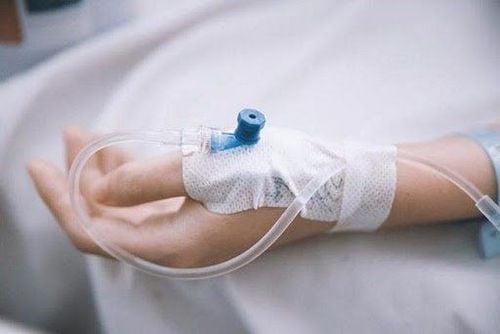
Trước khi tiến hành tiêm hay đặt kim luồn, bác sĩ sẽ sát khuẩn tay và dụng cụ y tế
5. Assist the patient to adjust to the most comfortable position before starting
Transmission posture is very important. Because the patient then restricts movement or when taking blood, it is necessary to move for the doctor to draw blood, so it is necessary to choose the most comfortable position. When injecting, you can sit or lie down depending on the time of operation. Choose a firm position with a pillow or cushion to reduce stress. When the patient is comfortable, the operation will be quick and accurate.
5.1 Administer injection/infusion to the patient First, the nurse or nurse will tighten the surface of the skin where the injection is to be performed. This helps to create momentum and limit venous deviation when injecting the patient. Note that if the patient is elderly, it should be done quickly and decisively. Due to old age, poor elasticity is easy to break vessels. In the case of a patient with a submerged vein, feel the vein with gentle pressure. Once the position has been determined, place the needle tilted with the skin at an angle of 10-15 degrees and operate slowly. Note that the veins of the elderly need definitive skin tightening and rapid needle aspiration to reduce pain and the risk of vascular rupture. For children, pay attention to choose a small needle suitable for the vein. Taking peripheral blood for babies is often more difficult, so the operation needs to be flexible to avoid injury or the needle is too deep. In case of blood spillage, cover your mouth with cotton and stick it on your own, using your hands to press firmly on the place where the cotton is placed to stop the bleeding. When withdrawing the needle need to be quick and decisive. If this step occurs, a problem can break the catheter causing it to drift with the blood stream. This negligence will increase the risk of extremely dangerous blood vessel blockage for the patient. 5.2 Protect the infusion site with cotton and a bandage. Do not expose the needle tip to air. Remember to always keep the tip of the needle covered with cotton when injecting. And there is a bandage after the injection or infusion. When taking cotton to press on the mouth of the needle, pay attention to only holding one side of the contact surface, not touching. This will reduce the risk of bacteria entering.
Please dial HOTLINE for more information or register for an appointment HERE. Download MyVinmec app to make appointments faster and to manage your bookings easily.




